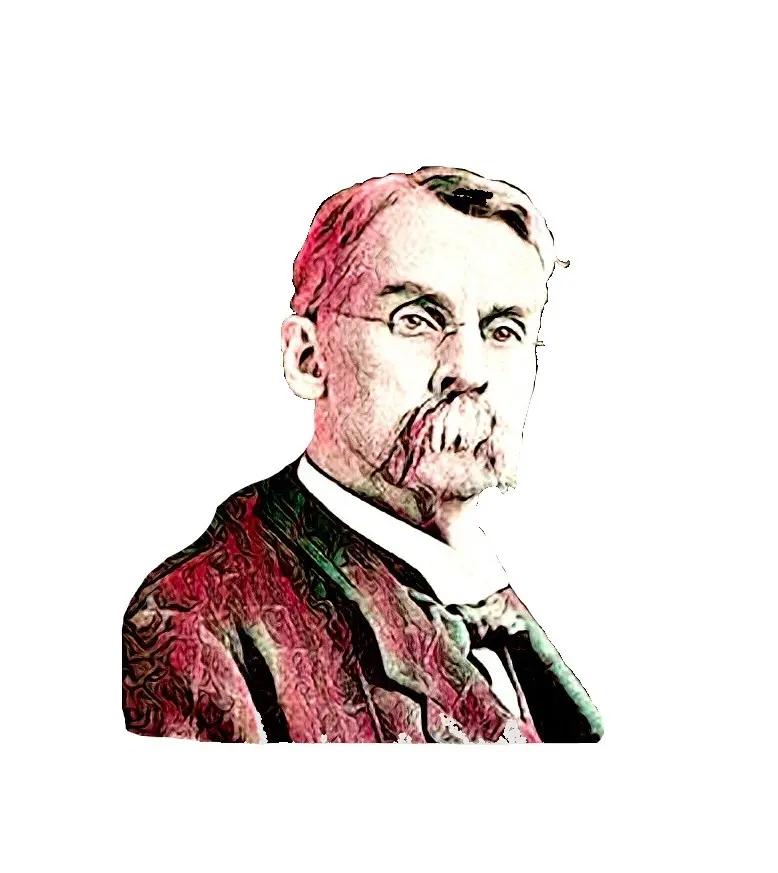
Dr. James Tyler Kent/ J T Kent was an american physician and one of the forefather of homoeopathy.
His writings on Materia medica, Philosophy, repertory etc. have been translated into number of languages and even remain in use by homoeopathic practitioners till today all over the world.
- BIRTH DATE: 31st March, 1849.
- PLACE: In Woodhull, New York, in united states of America.
GRADUATION
From the Madison university and secured his A.M. Degree from the same university.
- He was the president and trustee of Chicago homoeopathic hospital.
- He used to be the member in,
- American institute of homoeopathy.
- British homoeopathic society at London.
- State homoeopathic society.
- International Hahnemann association.
Table of Contents
ToggleFAMILY LIFE AND CONVERSION TO HOMOEOPATHY
- In 1874 he got married to Ellen and settled in St. Louis Missouri.
- Unfortunately, Ellen had died at the age of 19 years shortly after their marriage.
- He started practicing as an eclectic physician and became a member of Eclectic National Medical Association.
- Two years later he became a professor of anatomy at American College.
- He got married for second time to Lucy, to whom he was very much devoted.
- In 1878 Lucy became seriously ill form insomnia, nervous weakness and anaemia which failed to respond either to eclectic or orthodox treatment.
- Her disease got worse and she was bedridden for months.
- Lucy requested to try homoeopathic treatment from Dr. Richard Phelan who was a famous physician of that time.
- Kent strongly opposed his consultation and even ridiculed his ways of questioning while examination.
- But, after the prescription from him, Lucy began to recover dramatically.
- This incident made a deep impression on Dr. Kent and he decided to study under Dr. Phelan.
- He started to believe that homoeopathy was the only system of medicine, which looked at the fundamental cause of the illness.
- Phelan prescribed a few sugar pills with the instructions that a few of them are to be dissolved in a cup of water and then, only a teaspoonful to be given every two hours till Lucy fell asleep.
- Kent only smiled at this absurd treatment.
- However, due to requests of wife he gave her a teaspoonful and retired to his study.
- But, absorbed in his books he forgot to give the second dose.
- After four hours as soon as he remembered, he came from his studies to give the second dose.
- At his surprise, he found Lucy sleeping, which was a miracle to him because all the previous treatments had failed to cure her insomnia.
- This incident made a deep impression on Dr. Kent to start study of homoeopathy.
- In 1888 Kent’s second wife died.
- In 1890, he moved to Pennsylvania to take a position as Dean of professors at Philadelphia. He remained in that position until 1899.
- Clara Louis Tobey, who was a doctor turned homoeopath, treated by Dr. Kent and later she became his wife. She helped him in completing his famous works.
JAMES TYLER KENT BOOKS OR HIS MAIN WRITINGS
- Repertory of homoeopathic Materia medica
- Lectures on Homoeopathic philosophy
- Lectures of homoeopathic Materia Medica
- What the doctor’s need to know
DEATH
- On 6th JUNE, 1910 he died due to Bright’s disease at the age of 67 years in Stevensville, Montana.
CONTRIBUTIONS
IN THE FIELD OF TEACHING
- 1881-1888: He was a famous teacher of Materia medica at homoeopathic medical college, St. Louis.
- 1890-1899: He was a teacher of Materia medica at school of homoeopathy, Philadelphia.
- 1903-1909: He was a senior lecturer in Materia medica at Hahnemann medical college and hospital, Chicago and Hering medical college and hospital.
- He was a very famous teacher at that time.
- Students from many parts of the world tried to get admission to the institute where Dr. Kent was teaching.
IN THE FIELD OF MEDICINE
- Kent supported the use of 30th, 200th, 1M, 50M, CM, DM and MM potencies made on centesimal scale.
- He established the doctrine of ‘Series in Degrees’ while treating the chronic diseases.
- He discovered that, after completion of the action of 30thpotency, patient needs the 200th potency, but when the action of 200th potency gets exhausted, he requires 1M potency of the same remedy and so on to keep him under the action of remedy till he gets cured permanently.
- He discovered the “LAW OF VITAL ACTION AND REACTION”.
- He found that a homoeopathic aggravation is necessary after the administration of the exact similimum in chronic cases.
- He founded the language of reaction.
- He suggested the direction of the course of treatment corresponding the administration of the first dose.
- He gave much importance to will, understanding and the memory of the patients.
- He did not give much importance to constitutions.
- He used to say- “Every individual is a constitution”.
IN THE FIELD OF THE LITERATURE
- His most popular writing: What the doctor’s need to know.
- 1897: Repertory of homoeopathic Materia medica.
- 1900: Lectures on Homoeopathic philosophy.
- 1905: Lectures on homoeopathic Materia Medica.
- His books like New remedies, Clinical cases, Lesser writing, Aphorisms and precepts contains many new homoeopathic remedies proved by him.
